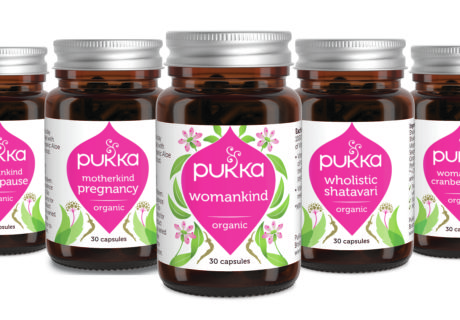Coconut oil has, for some time now, been regarded as an ingredient du jour. Interestingly, the very quality that once turned detractors against eating it – high saturated-fat content – is what now elevates it in beauty. It is rich in lauric acid, a fatty acid that kills bacteria, and is working its way into a plethora a personal care products.
According to the latest data from IRI, the provider of big data and predictive analytics for FMCG manufacturers and retailers, figures published in July 2017 show 23 per cent growth in value sales over the last year of coconut products in health, beauty and accessories – a category now worth more than £12m a year to UK supermarkets, high street chemists and independent pharmacies.
“Looking at our data, we can see that coconut as an ingredient has really been gaining in popularity since January of last year, which corresponds with figures showing that coconut-related web searches have been on the rise over the past couple of years,” comments Kaajal Bhatti, Retail Insight Manager, IRI. “I think what we’re actually seeing is something of a coconut revolution, rather than just a fad, as the gap between food and drink and health and beauty closes, suggesting that more and more people are looking to products and ingredients that look after both their internal and external health.”
Setting it apart from some naturally derived products, coconut oil has proven beauty benefits. The Journal of Cosmetic Science has written about how, in its raw organic form, its fatty-acid structure allows it to penetrate the hair shaft, something that few man-made conditioners can do. Studies have also been done on its performance as a sunscreen: while not a substitute for the conventional SPF, it has been shown to block up to 20 per cent of the sun’s UV rays.
“Although the trend started in the food and drink industry, it has quickly evolved into health and beauty showing the true versatility and popularity of the ingredient and the opportunities for both manufacturers and retailers in terms of product innovation, range optimisation and promotional campaigns,” says Bhatti.
In addition to the ‘does what it says on the tin’ products, such as TIANA Coconut Oil and Faith in Nature Coconut Handmade soap, the versatile ingredient is also an unsuspecting addition to the likes of RMS Beauty Lip Shine and Weleda Oat Replenishing Treatment. There are literally hundreds of examples within the natural beauty sector for this hero ingredient, not to mention mainstream products, all of which must be music to the ears of the many farmers around the world who have been growing and harvesting coconut as their primary livelihood for generations. Or is it?
According to IRI sales data in 2016, coconut oil was worth more than £14 million per year. Despite this, coconut prices are still very low, and farmers don’t have the resources needed to invest in productivity or replace ageing trees, let alone pay for medical care and schooling for their children. In a nutshell, coconut farming is not a very viable profession, and the next generation is looking for the exit.
Top-producing countries for coconut include Indonesia, India, Brazil, Sri Lanka, and Thailand, but most fair trade certified coconuts currently come from small-scale farmers (owning less than a few hectares of land) in the Philippines, where it is estimated around 60 per cent of farmers live in poverty. Fortunately, the deforestation practices linked with palm oil production are not really associated with the coconut industry, highlighting yet another catalyst for its popularity.
It’s critical, therefore, that as retailers of this hero product, you pass on the message to your consumers to support sustainable coconut oil. The alternative is the sad inevitability that what we love today, will be gone tomorrow.
Julia Zaltzman is a freelance writer, and editor of Natural Beauty News





